Technical Paper
Addressing high-emitting vehicles in Nigeria
A case study of using portable emission equipment for inspection and maintenance
Reference: “CLEANING THE AIR IN NIGERIA –LESSONS FROM AN I/M CAMPAIGN”, 3DATX, 34th CRC Real World Emissions Workshop, 10th – 13th March, 2024
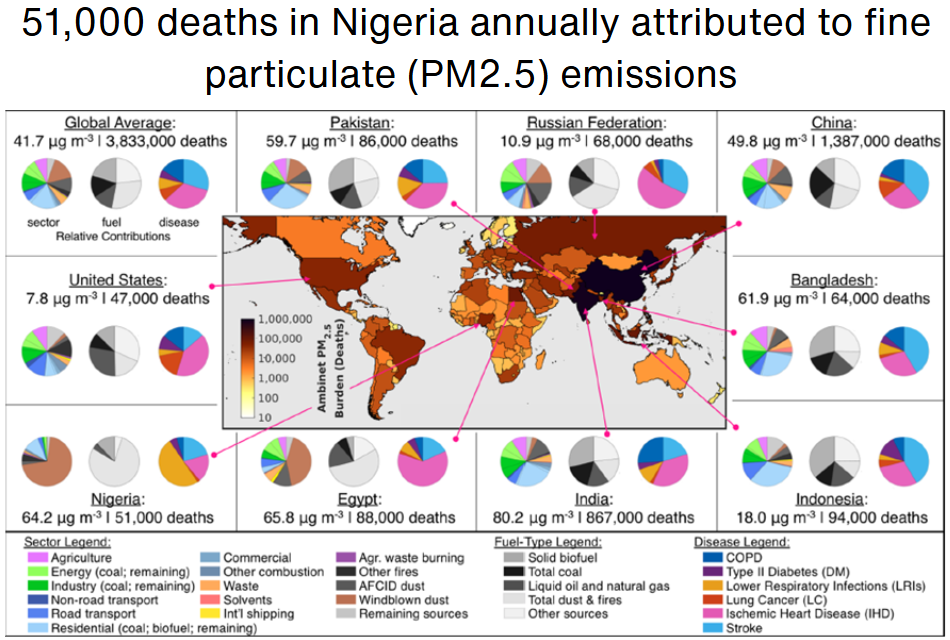
Background
Recent air quality data show that the problems of air pollution, while still persistent across the world, have shifted acutely to the most populated regions of the world which are still lagging the developed markets in terms of regulatory standards.
Perversely, the shift to cleaner mobility in advanced markets could lead to increased exports of older, polluting vehicles to the lower income countries, which lack resources to adopt best available pollution control technologies and to the latest emission standards to enforce imports of only cleaner vehicles.
A case in point is Nigeria, which according to the “2019 Global Burden of Disease” report, has average ultrafine particulate (PM2.5) concentrations of 64 ug/m3, and 51,000 deaths attributed to exposure to such high pollution. While not all of this is derived from the transportation sector, addressing tailpipe emissions is one tool for policymakers to limit pollution, especially as the number of vehicles increase. Nigeria had ~ 35 million vehicles in 2018, and the number is expected to more than double by 2050.
In-use testing of vehicles
At the 34th CRC Real World Emissions Workshop (2024) held in California, 3DATX presented their work done in collaboration with the Nigerian government in quantifying the real-world tailpipe emissions from passenger cars. Over 100 vehicles were tested for a wide range of gaseous and particulate pollutants using parSYNC FLEX iPEMS, a portable measurement equipment. Emissions were measured through a ~ 10 min test which covered idling and driving on a repeatable route.
The fleet makeup of the vehicles tested is shown in the figure. It supports the key concerns stated earlier: the vehicles are imported from advanced countries, and are very, very old – some over 3 decades old and certified to a time when Europe hadn’t started its emission standards. To put that in perspective, vehicles manufactured this year might be around in Nigeria in 2065, also 3 decades after Europe wants the last combustion engine to be sold in the continent. It is clear that the side effect of the move to zero-tailpipe vehicles is that some of the emissions are being shifted to other parts of the world.

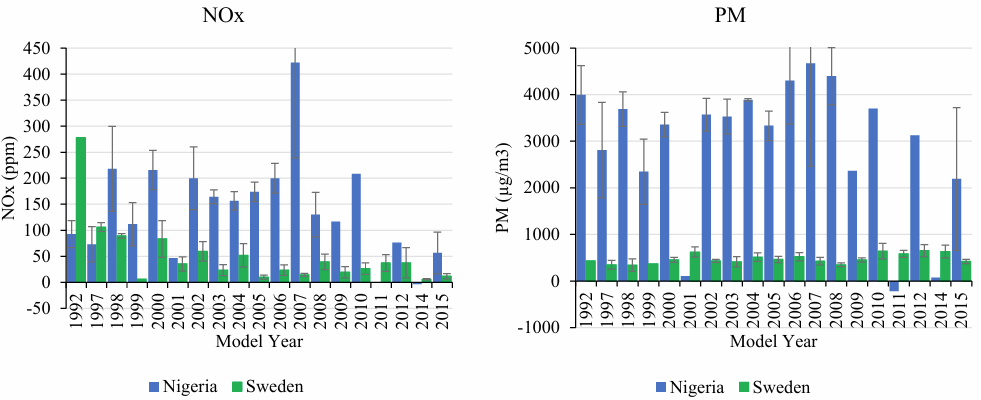
Emission test results
How bad are the emissions from these older vehicles? While it has become the norm to discussion tailpipe standards in milligrams per mile, these vehicles are emitting at “gram/mile” levels. The combined NOx and hydrocarbon emissions were ~ 6 – 7 g/mi, which is about 200 times higher than the cleanest vehicles available in the U.S. today. Note the comparison with vehicles similarly tested in Sweden, which emit at much lower levels. The authors note that this difference is likely attributed to poor fuel quality, and poor maintenance and/or tampering issues.
An obvious next step is to consider repairing these vehicles and retrofitting them with the best available emission control devices. Yes, it can be done at a modest price (especially considering the significant reduction in emissions), but that is also complicated by the poor local fuel quality, which can lead to catalyst deactivation.
More Information
For the equipment used in the study above, visit 3DATX.
Real-world testing using portable devices is not limited to emerging countries. In fact, some countries in Europe have already implemented the “periodic technical inspection” program for detecting high particulate emitters, exceeding Euro 6 norms. While this is currently limited to diesel passenger cars, there is work underway on extending the methodology to gasoline (petrol) vehicles as well.
Sign up here to receive such summaries and a monthly newsletter highlighting the latest developments in transport decarbonization
5-Min Monthly
Sign-up to receive newsletter via email
Thank you!
You have successfully joined our subscriber list.
Recent Posts
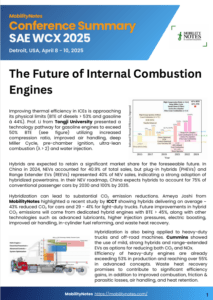
Conference Summary – SAE WCX 2025
![]()
A summary of the “SAE WCX 2025” conference held in Detroit.
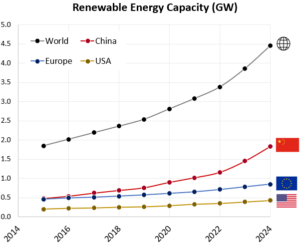
IRENA Renewable Energy Capacity Statistics 2025
![]()
According to the latest report from IRENA, 2024 saw the largest increase in renewable capacity, accounting for 92.5% of overall power additions.
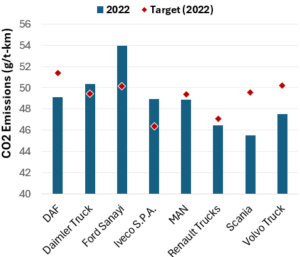
CO2 Emissions Performance of Heavy-Duty Vehicles in Europe – 2022 Results
![]()
The European Commission has published the official 2022 CO2 emission results for heavy-duty vehicles. Many OEMs are ahead of the targets and have gained credits, while others have their work cut out as we approach the 2025 target.

